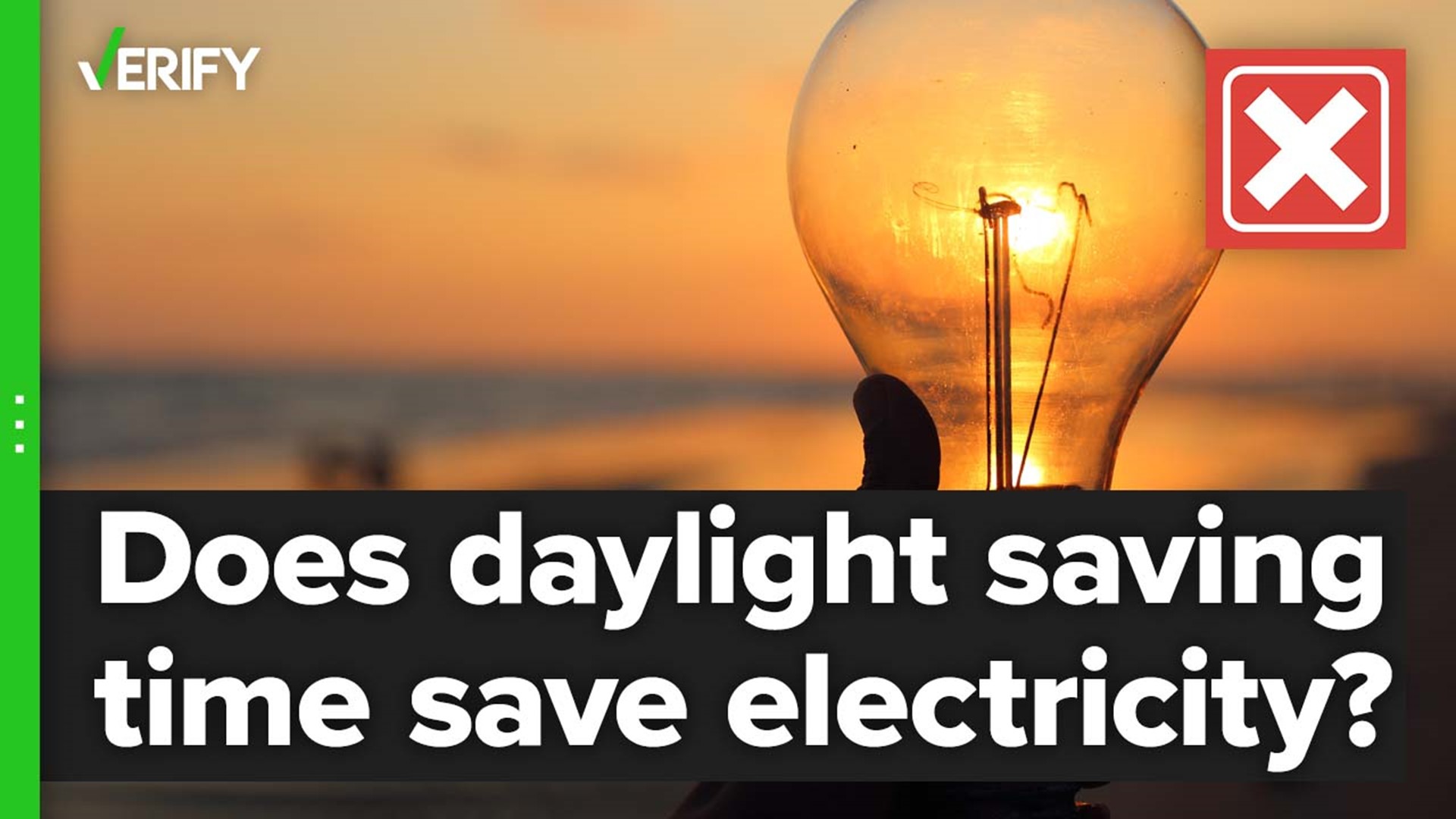Daylight saving time comes to an end this year in the United States at 2 a.m. on Sunday, Nov. 6.
Leading up to this year’s “fall back,” VERIFY is publishing a series of stories about the semiannual time change. You can read more about states’ efforts to stay on daylight saving time permanently and when countries across the world change their clocks.
As hundreds of millions of people prepare to switch back to standard time, some have wondered why most of the country changes the clocks twice a year.
The U.S. Department of Energy says daylight saving time “was seen as a means to help reduce electricity use in buildings.”
THE QUESTION
Does daylight saving time significantly save electricity in the U.S.?
THE SOURCES
THE ANSWER
No, daylight saving time does not significantly save electricity in the U.S.
WHAT WE FOUND
While daylight saving time was first practiced in the U.S. during World War I, it ended nationwide in 1919 after the war concluded. It was then put back into place during World War II. However, when it again ended nationwide after World War II, many places continued to observe daylight saving time – resulting in a patchwork of time zones.
So, in 1966, Congress passed the Uniform Time Act to standardize time within the zones that exist today in the U.S.
Soon after the implementation of daylight saving time, the question of whether it actually results in electricity savings was debated.
The Department of Transportation was tasked with finding an answer. The department submitted a report in 1975 that was reviewed a year later by the federal government’s National Bureau of Standards (NBS). The NBS review said the Transportation Department found electricity savings of 1% per day during March and April. However, the NBS questioned the Transportation Department’s conclusion, saying when it followed the same research technique, it found “no conclusive evidence for decreased production of electrical energy during Daylight Saving Time.”
In 2005, Congress approved extending daylight saving time by four weeks, so that it begins on the second Sunday in March and concludes on the first Sunday of November.
Again, the government sought evaluations on whether the extension of daylight saving time would result in a reduction of electricity use.
In 2006, the U.S. Department of Energy concluded, “total potential electricity savings benefits of [extended daylight saving time] are relatively small.”
Another Department of Energy report, published in 2008, found the electricity savings from the four added weeks of daylight saving time were “small compared to the national total for the year, representing about 0.03 percent of the total national electricity consumption.”
A 2007 analysis by the California Energy Commission on electricity consumption also found the extension of daylight saving time “had little or no effect on energy consumption.”
While those studies only examined the weeks that Congress added to daylight saving time, a study published in 2008 by the National Bureau of Economic Research evaluated all eight months of daylight saving time and the impact it had on electricity costs in Indiana.
The researchers found it actually cost residents an additional $9 million a year in energy costs when the state started observing the time change in 2006. That was because while the use of lighting dropped, there was more demand for heating and cooling.
More from VERIFY: Yes, states can opt out of daylight saving time

